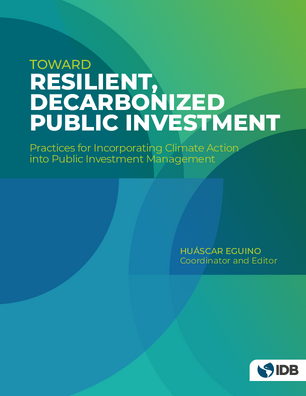Toward Resilient, Decarbonized Public Investment: Practices for Integrating Climate Action into Public Investment Management
Date issued
Feb 2024
Subject
Public Investment;
Investment;
Climate Policy;
Finance;
Climate Resilience;
Climate Change;
Economy;
Climate Expenditure;
Disaster;
Climate Finance;
Taxonomy;
Greenhouse Gas Emission;
Disaster Risk Management;
Resilience;
Nationally Determined Contribution;
Ministries;
Decarbonization
JEL code
H43 - Project Evaluation • Social Discount Rate;
H54 - Infrastructures • Other Public Investment and Capital Stock;
H84 - Disaster Aid;
O16 - Financial Markets • Saving and Capital Investment • Corporate Finance and Governance;
O21 - Planning Models • Planning Policy;
O22 - Project Analysis;
O23 - Fiscal and Monetary Policy in Development;
O44 - Environment and Growth;
O54 - Latin America • Caribbean
Category
Monographs
Public investment is a powerful instrument to address climate change mitigation and adaptation challenges, support the transition to low-carbon economies, and help countries meet the goals established in the Paris Agreement. However, for this to occur effectively, public investment management processes must incorporate the climate perspective as part of the planning, resource allocation, and project implementation tools. Two main areas that guide this work are defining the tools and determining what has been learned about their implementation. The chapters herein present a series of management practices and tools that are useful for integrating climate action into investment management, with particular attention to those that support the planning and resource allocation stages. In the planning stage, the work analyzes the following aspects: (i) the use of long-term climate strategies as guiding instruments for public investment; (ii) the design and adoption of national green/climate financing strategies; (iii) the use of investment taxonomies as tools for classifying economic activities and assets according to their contribution to reaching the environmental objectives and adaptation and mitigation; (iv) the application of the social carbon price in the cost-benefit evaluation of projects; and (v) the integration of climate risks in public investment management. In the resource allocation stage, the document analyzes outstanding practices for integrating climate action into public investment prioritization processes.
Generative AI enabled




